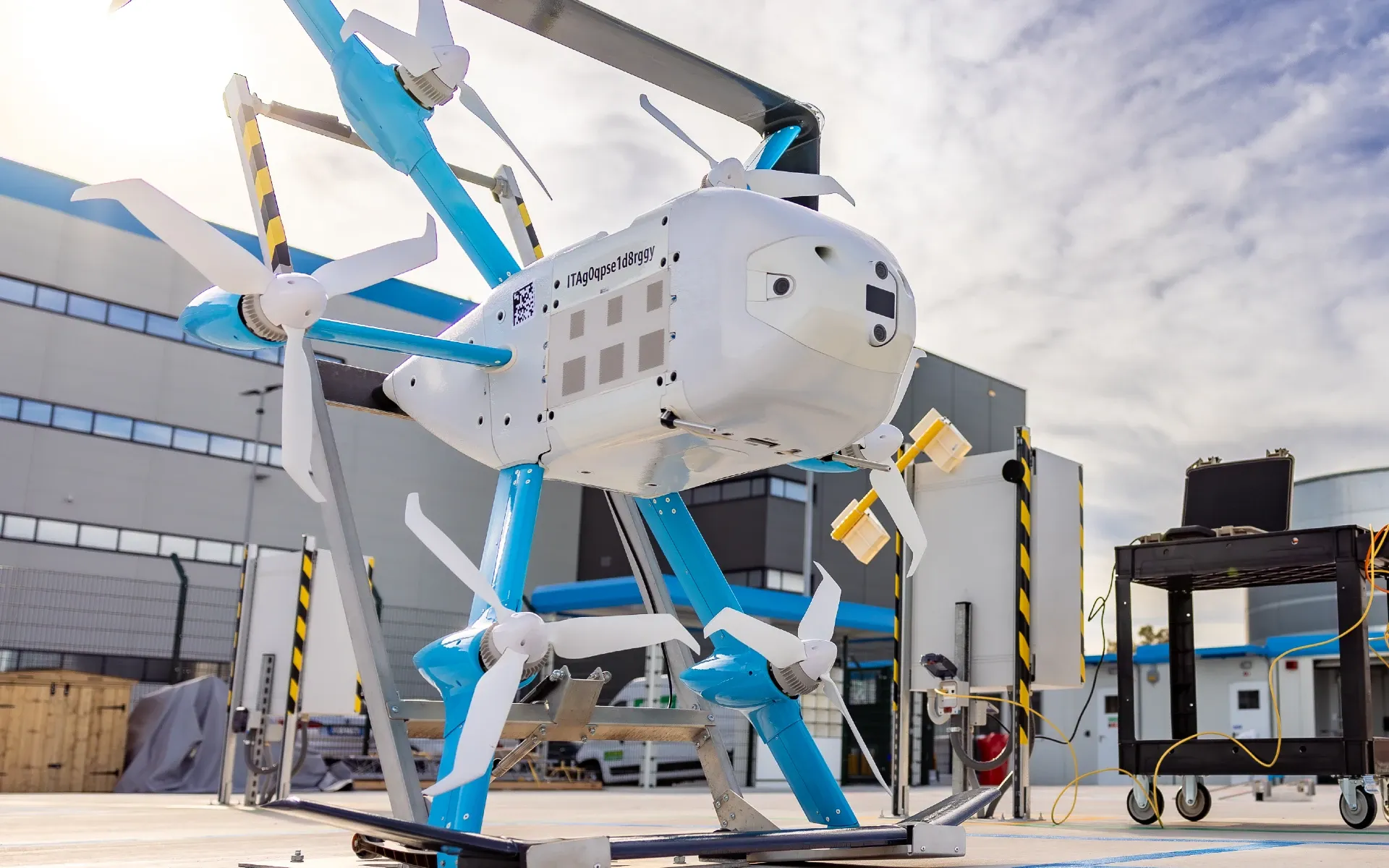Amazon plans first UK drone delivery hub in Darlington
British regulators to review Amazon's proposal for Prime Air drone delivery operations from Darlington fulfillment center.

Britain's Civil Aviation Authority faces a significant regulatory decision as Amazon submitted plans for its first UK drone delivery operations, announced on January 28, 2025, five days before today's date.
The e-commerce company selected its Darlington fulfillment center as the initial location for Prime Air operations in Britain. According to regulatory documents, Amazon must secure two separate authorizations before commencing operations: planning permission from local authorities for flight operations facilities and Civil Aviation Authority (CAA) authorization for drone flights in British airspace.
The announcement marks Amazon's first concrete step into the British commercial drone delivery market, following its 2023 statement of intentions to launch UK operations. According to Amazon's operational data from existing services, Prime Air has completed thousands of deliveries in the United States since its 2022 launch, with delivery times under 60 minutes using electric drones.
Technical specifications of the operation remain under CAA review. The regulatory framework for commercial drone delivery in Britain requires comprehensive safety assessments, airspace management protocols, and operational guidelines. The CAA's evaluation process examines factors including drone flight paths, weather condition limitations, and emergency procedures.
The Darlington implementation represents a strategic expansion of Amazon's global drone delivery infrastructure. According to flight operation records, the company's MK30 drone model, which operates in other markets, demonstrates twice the range capability of previous versions while producing 50% less noise during flight operations.
Current UK aviation regulations mandate strict oversight of commercial drone operations. The CAA's authorization process involves detailed examination of proposed flight corridors, obstacle avoidance systems, and redundancy measures. Regulatory requirements also encompass operator training protocols, maintenance schedules, and incident response procedures.
Local community engagement forms a critical component of the approval process. According to planning documents, Amazon must conduct community consultations to address residents' concerns regarding noise levels, privacy considerations, and safety measures. The feedback gathered during these sessions will inform both the local authority's planning decision and the CAA's operational authorization.
The selection of Darlington as the initial UK site followed detailed assessments of population density, airspace complexity, and existing infrastructure capabilities. The fulfillment center's location provides opportunities for controlled testing while serving residential areas within the drone's operational range.
Employment implications of the project remain under evaluation. According to Amazon's operational requirements, the drone delivery program necessitates specialized personnel for system maintenance, flight operations, and safety monitoring. The company indicated its intention to begin local hiring once regulatory approvals are secured.
Technical specifications of the drone delivery system incorporate multiple safety features. According to operational protocols, the electric drones utilize sophisticated sense-and-avoid technology, redundant navigation systems, and automated emergency procedures. Weather monitoring systems integrate with flight control protocols to ensure safe operating conditions.
The expansion into British markets follows established operational patterns from other regions. According to delivery data, Amazon's drone service in the United States operates from multiple locations, including recent expansion into the West Valley Phoenix Metro Area from Tolleson, Arizona.
Regulatory precedents from existing markets provide context for the UK authorization process. The CAA's evaluation considers operational data from established services while adapting requirements to British aviation standards and local conditions. Safety records and incident reports from current operations inform the regulatory framework development.
The timeline for service implementation depends on multiple factors. According to regulatory procedures, both local planning permission and CAA authorization involve detailed review processes. Environmental impact assessments, noise studies, and safety analyses form part of the comprehensive evaluation requirements.
The proposed service area boundaries await regulatory determination. According to operational parameters, drone delivery range capabilities must balance technical limitations with service efficiency requirements. Flight path planning incorporates considerations for residential areas, commercial zones, and restricted airspace.
Amazon's drone delivery initiative represents one component of evolving logistics infrastructure. According to company data, the electric drone fleet complements existing delivery networks while potentially reducing ground vehicle traffic in service areas. The environmental impact assessment includes analysis of emissions reduction potential through electric drone operations.

